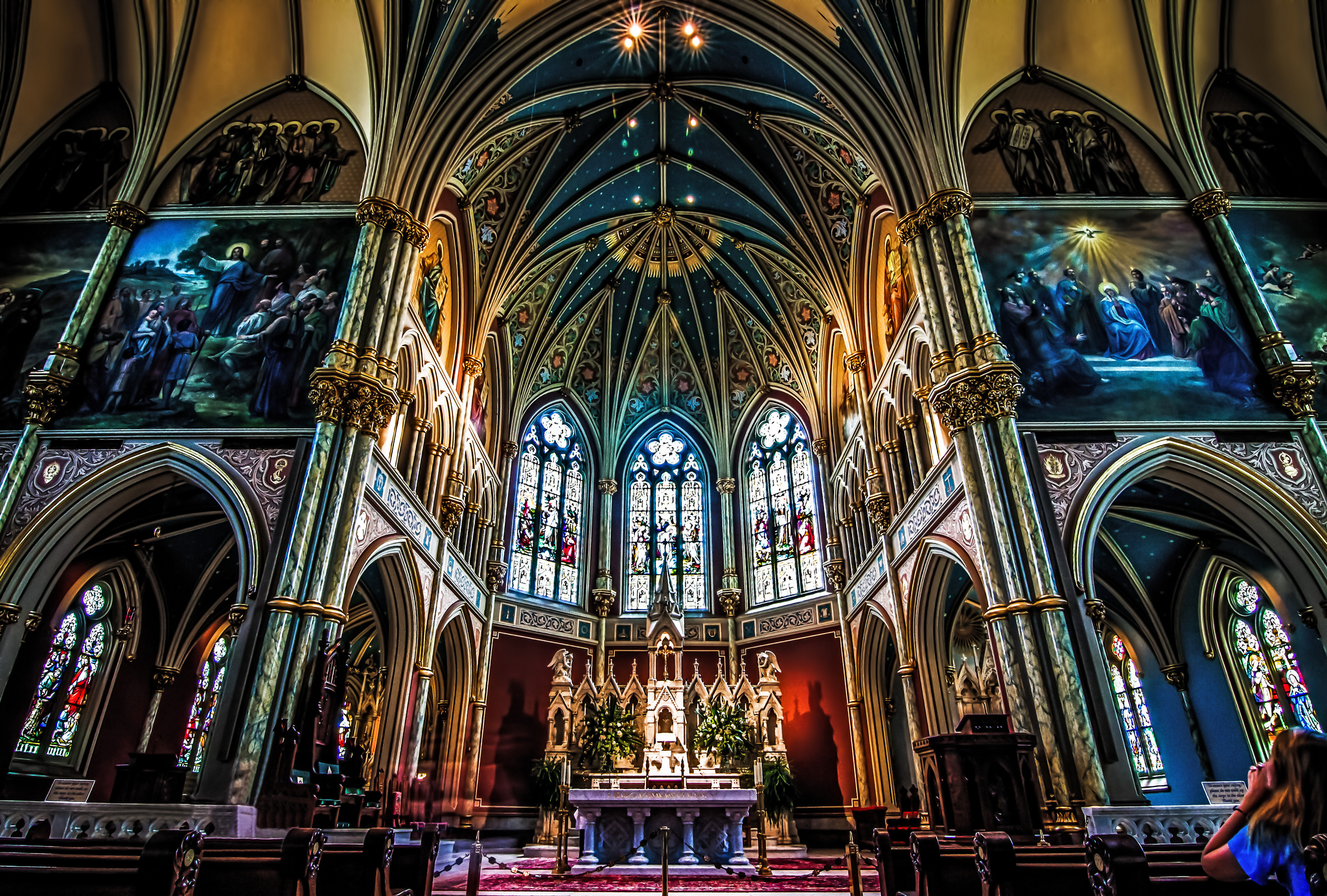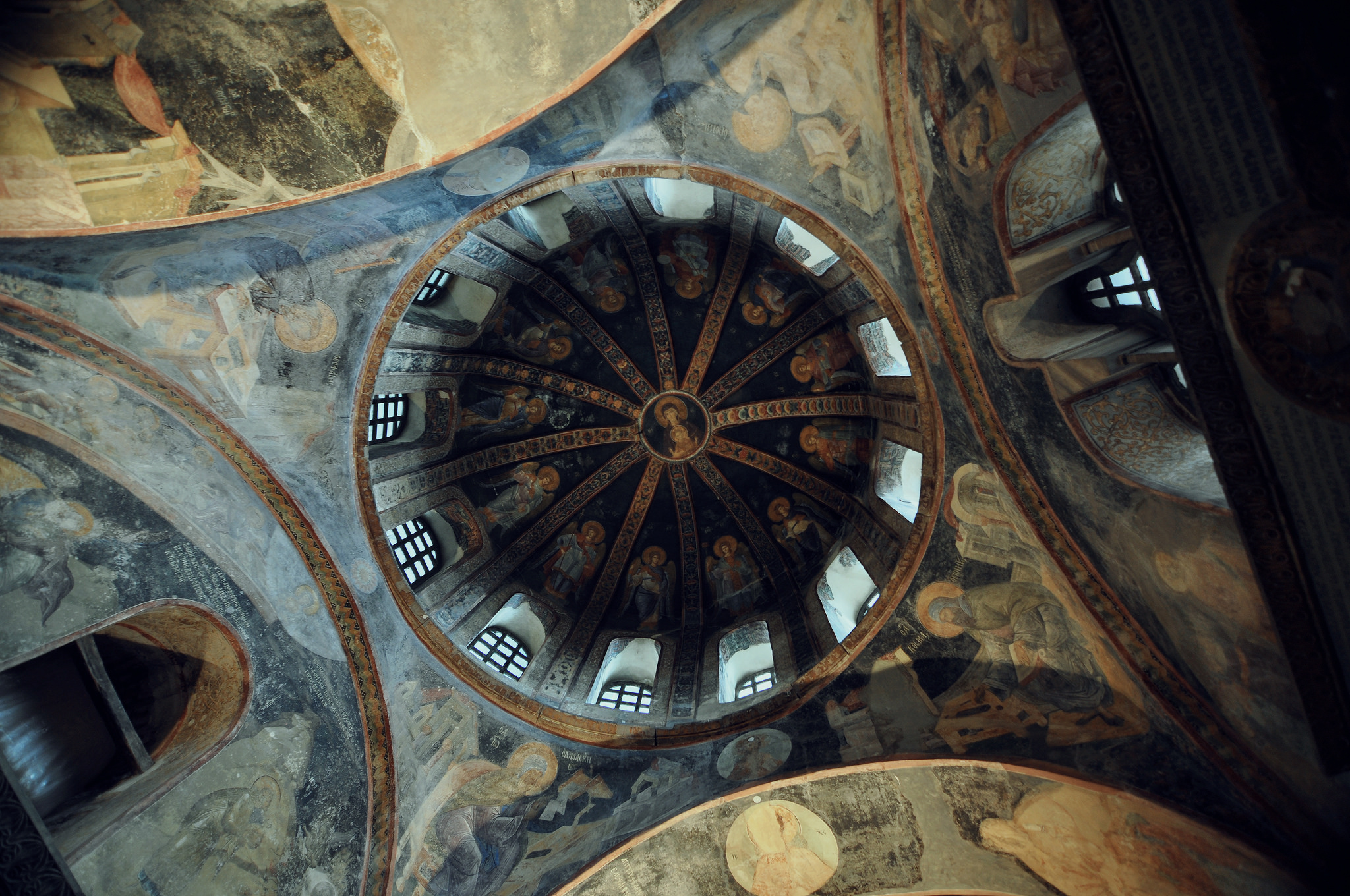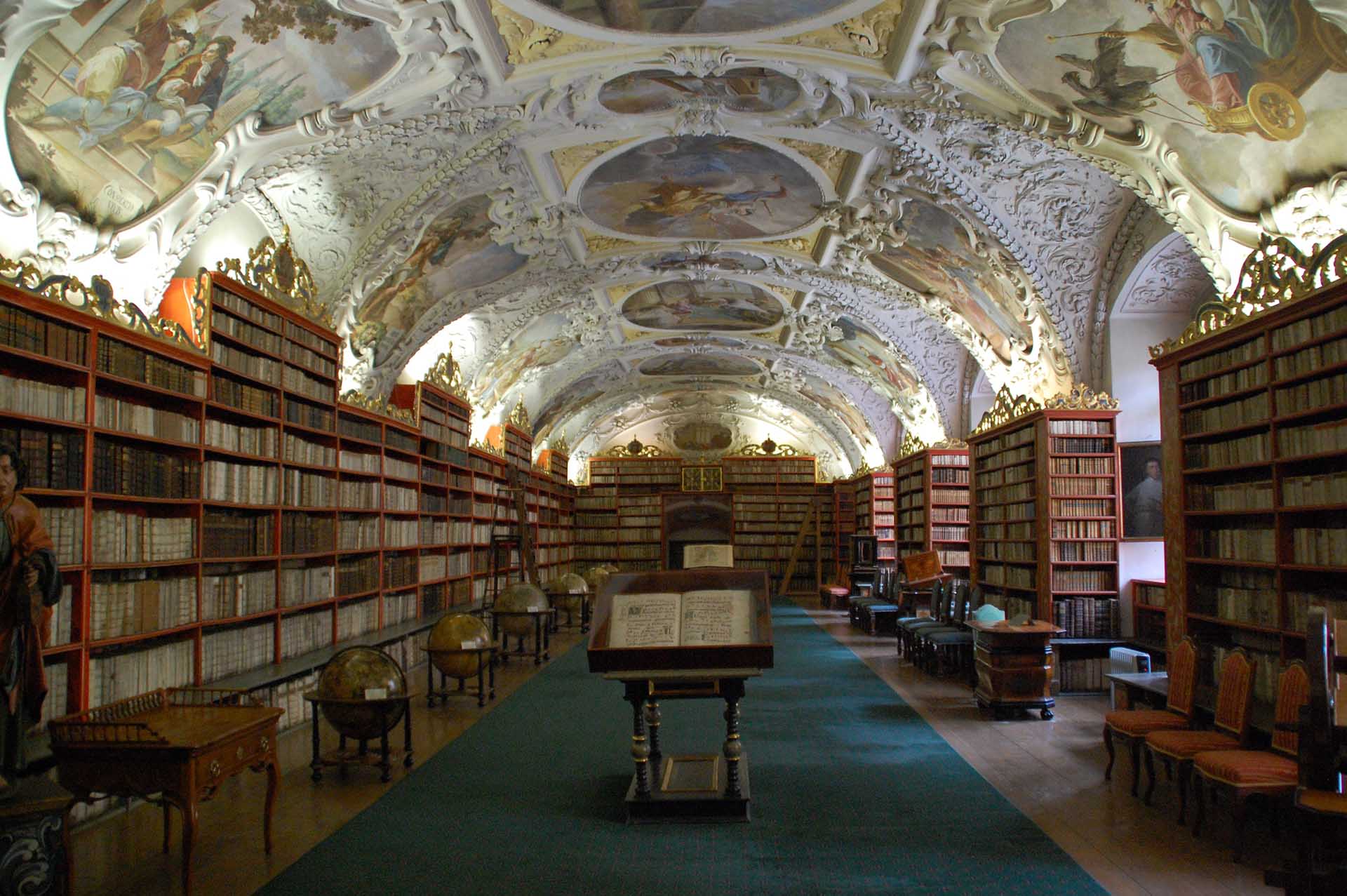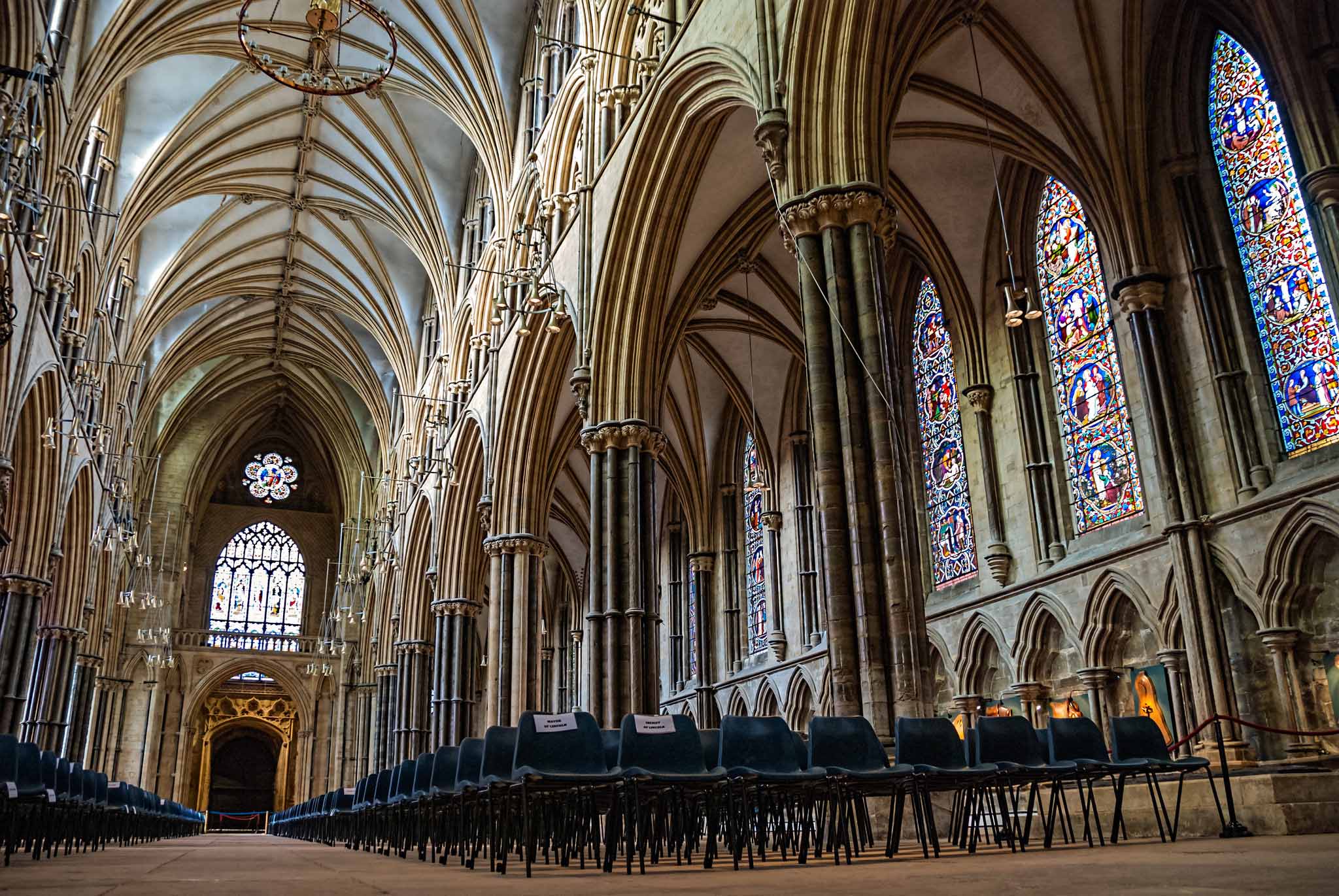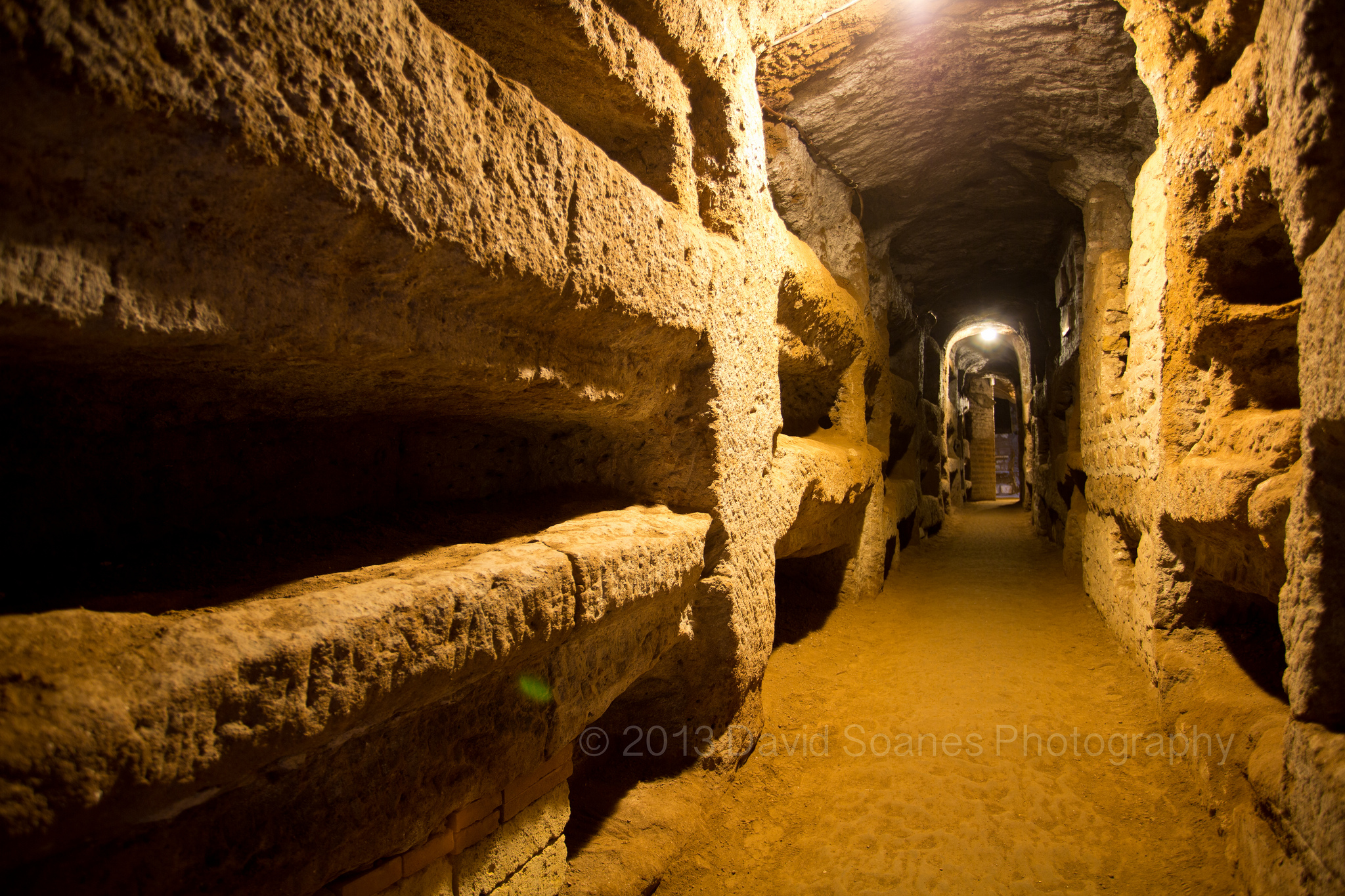Where Was the Church in the 1940’s?
Copyright 2005 T. Stanfill Benns
(This text may be downloaded or printed out for private reading, but it may not be uploaded to another Internet site or published, electronically or otherwise, without express written permission from the author.)
Those trying to make sense out of the disintegration of the Church today are nonplussed at why Catholics seemingly well educated in their faith gave up so easily on the unchangeable Church, giving into Vatican II changes and accepting the New Order of the Mass. While there is more than one answer to this question as is often the case, the most plausible answer is the one provided by Rev. Paul Furfey. [1] Writing in 1944, Furfey summed up the problem already at work in his day as follows: “Catholic conformism can be explained only in terms of cowardice…Catholic conformists are Catholics in the sense that they deny no doctrine of the Church outright, and conform as closely as they dare to the viewpoint of unbelievers…” Such conformists, he continued, are “timid Catholics (who) hesitate to assume their normal burden of suffering to accept persecution for the sake of their opinions…” It was Christ’s intention, Furfey pointed out, that “Christians make a clean break with the world…and that they should suffer the consequences.”
Furfey goes on to list “the variety of cruel punishments” that awaits the Catholic non-conformist. “In some times and in some places the punishment is the prison cell, the concentration camp, or the firing squad…” Other less drastic but equally painful methods include “withholding rewards,” connected with worldly success; employing ridicule, “when most persons are terrified of ridicule. It requires a real bit of heroism to stand up for one’s convictions when they make one the butt of jokes and insults.” And of course there is the general unpleasantness of just being different, and the loneliness that accompanies being opinionated in matters of religion. After all, conformism is rewarded with all the perks of life – companionship, mutual favors, everyday pleasantries, inclusion in social affairs and the endorsement of those in positions to further one’s business and social life. And non-conformism results effectively in social exile.
How did Catholics, supposedly trained to be other-Christs and imitate the heroic sanctity of the martyrs, descend to Catholic conformism? The best training in conformism and the herd mentality was offered in public schools, where over 50 percent of Catholics in this country received their education; heroic sanctity, if taught to children at all, was a weekly sidebar offered in CCD classes. In public schools, Horace Mann [2] early on mandated conformism as the best way to assure assimilation of the doctrines taught by public education and enforce the disciplinary codes. Even in many “Catholic” schools, emphasis was placed on the social and political flavor of Catholicism – its external components, not its internal core beliefs. Families failed as well in encouraging the predominance of internal religion and a daily, personal relationship with God. Too often, all emphasis was placed on the superficial and the worldly.
In concluding his explanation of Catholic conformism, Furfey observed that such behavior constitutes a deadly dualism, defined by Pope Pius XI [3] as “moral, juridical and social modernism…Social modernism combines two characteristics: an (outward) profession of loyalty to Catholic social doctrine plus a disregard for the encyclicals as though they were ‘out of date.’ Would it be rash then to assert that social modernism and Catholic conformism is one and the same thing?” And can we add here that Furfey’s description fits both Novus Ordo adherents and Traditionalists alike? A Protestant author defined this social modernism as a sort of “civic idolatry” permeating America even before Vatican II.
Will Herberg and others chronicled the gradual metamorphosis of Catholicism, Protestantism and Judaism into one religion in this country; a religion that kept as its standard the expectations of the State and society in general, not their respective religious beliefs and practices. Herberg [4] had this to say about religious conformism: “The religiousness characteristic of America today…is without serious commitment, without real inner conviction…The very notion of being ‘singled out,’ of standing ‘over against’ the world is deeply repugnant to one for whom well-being means conformity and adjustment. Religion is valued as conferring a sense of social acceptability and ’belonging,’ a sense of being really and truly of the world and society,” when the Catholic knows only too well he must be in the world of necessity, but not of it. “Biblical faith…is a declaration of permanent resistance to the claims of society, community culture and cult…,” Herberg continued. Those embracing this conformism he calls “religiosity” protect themselves “against this profoundly disturbing aspect of biblical faith by refusing to understand it…Nonconformity, uncompromising witness are so ‘unsociable,’ so terribly ‘unadjusted’! The very purpose of man’s built-in radar apparatus is to protect him against such perils. It protects him so well that it makes the prophetic faith of the Bible almost unintelligible to him.”
Speaking on the subject of biblical faith at the Vatican Council in 1869, St. Anthony Mary Claret noted that if those denying the doctrine of infallibility would take the time to study Scripture, the teaching of this doctrine would be clearly seen and understood. The saint then went on to explain why Scripture is not understood, and his explanation applies to Biblical teaching on many other doctrines today as well.
1.) Men do not really LOVE God
2.) They lack humility
Herberg agreed with the saint, identifying this lack of humility with the rise of secular humanism. In the end, he concluded, it is “not man who serves God, but God who serves man…” Faith is used as “a surefire device to get what we want,” be it prosperity, social standing, security or peace of mind. And if this was the case in the 1940s and 1950s, what can we expect today?
Herberg further identified religiosity as “a kind of national messianism…a fusion of religion with national purpose…American culture-religion is the religious aspect of Americanism,” and Pope Leo XIII condemned Americanism as a heresy. [6] What Herberg really said is that American Catholics long ago placed their culture and government superior to the teachings and laws of the Church, paying only lip service to Church authorities. The war was lost long ago, and over time obedience to the Pope and Church teaching eroded to the point that allegiance to both placed second, and personal autonomy came first. By the time Vatican II commenced, most American Catholics were only too happy to make concessions to their Protestant brethren in the name of “ecumenism,” a high-sounding phrase synonymous with religiosity. Those opposing Vatican II for various reasons made the focal point of their opposition the Tridentine Mass, not the papacy, and so papal authority was dealt yet another deadly blow. Traditionalists, as they styled themselves, soon became known as those “Latin Mass dissidents,” a title they declined to contest. As Rev. Denis Fahey pointed out, it was the Reformation that first separated the life of the Christian from that of the citizen. “The principle of private judgment prepared the way for the opposite extreme error of ‘holy rebellion,’ and the right of the people to overthrow authority whenever it pleases them.” [7]
And the separation of the Christian from the citizen, beginning with the triumph of these heresies paved the way for Liberalism, Naturalism and ultimately Modernism. It is this ‘holy rebellion’ and defiance of all legitimate authority, even that of the civil sector, so zealously practiced by Traditionalists that has desacralized any early intent they ever had to preserve Catholic Tradition and safeguard the faith. Retaining their Americanist flavor, these “Catholics” unleashed their ‘holy rebellion’ against the very structure of the Church established by Christ Himself. Rather than laboring to discover the solution to the manufactured Church crisis according to the teaching, laws and practices of the Church Herself, they did all in their power to assist Her enemies in their attempts to administer the death blow long planned by Freemasonry, perpetuators of Naturalism. Whether these individuals were secret society members themselves or unwilling dupes, the result was the same.
Rev. Felix Sarda y Salvany [8] defined this rejection of true authority and “love of ease” as an endorsement of the false teaching that “Belief is not imposed by a legitimately and divinely constituted authority, but springs directly and freely from the unrestricted exercise of the individual’s reason or caprice upon the subject matter of revelation.” This then is the essence of Liberalism as it first appeared in the 19th century. Sarda condemns Liberalism as a grave sin and cites Pope Pius IX’s Syllabus of Errors to prove the Church has condemned it as a heresy. Rev. R. J. Meyer, S.J., writing 30 years later agreed that liberalism, “under every form is heresy,” but emphasized that “it is worse than simple heresy; for by rejecting the principle of authority, it strikes at the very foundation of faith, and consequently it comprehends under it all possible heresies. It is, therefore, radical and universal heresy.” [9] While Meyer’s treatment of this subject was brief but complete, Sarda devoted an entire volume to it, delving into every aspect of this destructive error. He carefully explained that it is capable, chameleon-like, of adapting itself to any given situation, time or place, as does Meyer. That it has so adapted to our place and time is all too obvious.
According to Sarda, it was the rise of individualism [10] and especially the majority rule of democracy that paved the way for Liberalism’s success. Today, individualism is supreme and human liberty knows no bounds, even going so far as to lay claim to the right to perpetrate all manner of perversion, blasphemy and sacrilege without fear of retribution. This certainly is a far worse situation than existed in Sarda’s day, and it has contributed immeasurably to the mutation of Liberalism into an even more insidious form. For today Liberalism has staked its claim in the midst of the sanctuary, the priesthood, the episcopacy — yea even in the Holy Place (Rome, the Vatican) itself. Many see it at work in the Novus Ordo church, where it has made a mockery of authority and uprooted or diluted every doctrine. Sarda warned his readers of this, relating prophetically that Liberal “Catholics” in his time “believed the Church out of date, held back by ultramontanes; but they have hopes that she will in the course of time catch up with the modern spirit of progress…A new theology will be developed more in conformity with the needs of the times, more in harmony with the modern spirit, which makes such large demands upon our ‘intellectual liberty.’” Those dripping with the spirit of false tolerance and charity abounded even before the changes wrought by the false V2 council and were only too happy to welcome them. Had they practiced true charity and demanded that these Liberals be run out of the Church; had they erected a vanguard of their own using Catholic Action as a battering ram to defend the Faith, Catholic conformism would have been stopped dead in its tracks. But instead they sweetly gave all the benefit of the doubt, put the best face possible on the heresy practiced by their neighbors and, as Rev. Sarda observed, believed “that all is well.” For this reason Sarda devoted his entire book to condemning this deadly false charity precisely to prevent a Vatican II from ever occurring.
Even amongst those who believe themselves to be free of the Novus Ordo contagion, Liberalism reigns unopposed, having successfully accomplished yet another metamorphosis — its absorption, along with Americanism into Modernism, which Pope St. Pius X defined as the “synthesis of all heresies” [11]— to lend itself to the age. While charity now presents in many as something that will not tolerate an acceptance of the Latin Mass and the old ways, because such is not in tune with the Liberal spirit, it nevertheless forfeits the rights of truth, moral teaching and doctrine in favor of those “rights” of Catholics to demand the Sacraments and be led willy-nilly by their pastors. Rather than openly claim themselves capable of understanding doctrines and determining what measures should be taken in the wake of Vatican II, Traditionalists surrendered their reason to floating priests who left the Novus Ordo; they extended a false charity to these unproven and in many cases, bogus clerics. This move followed Liberalist thinking, described by Rev. Sarda as the tendency to compromise, concede and submit rather than defend the faith. There is no doubt that many of the early refugees of the VII debacle truly believed they were observing the virtue of obedience by deferring to these priests. But few turned to private study to assess the situation according to the mind of the Church, even in the face of scandal surrounding certain priests. While this in itself demonstrates a reluctance to abide by all the Church teaches, the real fault lies primarily with self-styled Traditional leaders and clerics.
Author Michael de la Bedoyere, also writing in the 1940s commented on this tendency to blind obedience, noting that the training necessary to execute the high standards of Catholic existence was available to Catholics then and by extension was available to later Catholics in the form of Bedoyere’s book. Bedoyere nailed the real problem to the wall when he wrote: “What too often is lacking is the interest and training in APPLYING those standards and knowledge to every circumstance in life. The man of the world HAS to think for himself if he wants to act intelligently at all, for there is no one to think for him; THE CHRISTIAN IS IN DANGER OF NEVER THINKING FOR HIMSELF BECAUSE HE EXPECTS ALL HIS THINKING TO BE DONE FOR HIM…”(The ideal of action) “is not to act just BECAUSE someone else tells one to, but to act for oneself BECAUSE ONE SEES FOR ONESELF, in the light of God’s will and the teaching of the Church or one’s lawful superior, that the action IS right…” The appeal of Catholic Action, he stated, “is for those who want to use their BRAINS, to those who want to be up and doing SOMETHING to make more sense of their lives.” [12]
Bedoyere went on to explain that in a disordered world, Catholics would be tempted to concentrate only on the salvation of their own souls. By refusing to be their brother’s ‘keeper, they abandoned the duty of charity toward their fellows, focusing on their own spiritual navels instead. This amounted to a flagrant disregard for what many considered the seemingly hopeless command of the Sovereign Pontiffs to reorder the world. “The tendency will be for individuals to blind themselves to the whole complexity of the situation, remaining content instead to ‘follow their leaders’ along a safer path to be negotiated under expert guidance…Men who know the essential truth will, under these circumstances, tend to avoid making choices in the light of all the circumstances and they will become accustomed to allow their betters to make safe choices for them. They will seek to escape having to grope their way in semi-darkness and surrounded by every obstacle and danger; instead they will look up to the steadier and stronger light…which only reaches to certain, favored spots.”
Rev. Sarda noted this same disorder in his day among practical Liberalists, including those calling themselves Catholics. “Like a flock of sheep with closed eyes they follow their leaders, “ he wrote. “They know nothing in truth of principles or systems, and did they perceive the perversity of their instructors would perhaps detest them. But deceived by a false cry or shibboleth, they troop docilely after their leaders…disposed to take any form, ready for any folly or absurdity proposed by the leaders.” In all fairness, lay Traditionalists were probably the least blamable amongst those held to be Catholic, although they must still take responsibility for learning and defending their faith. Not so, however, their leaders and “pastors” who long ago took the responsibility for these dissidents upon themselves and therefore must be held accountable for any damage done to souls. Upon them falls all the same blame the Church laid at the door of the leaders of the Jews in Christ’s time, who knew or had the opportunity to learn that Christ was truly the Son of God, yet deliberately misled those in their care for political or personal reasons.
Eventually certain members did tumble to the perversity of their “pastors” and objecting to abuses, sought out other clerics or groups who often proved little better. Still others determined that such priests had no authority to minister to them or dictate what teachings of the Church yet prevailed and retreated to observe the faith in the privacy of their homes. Yet even these behaviors indicate a distorted and erroneous idea of true authority and its origin, and demonstrate their implicit denial of the Roman Pontiff’s supreme authority and perpetual role in the Church. It is as though authority is not restored precisely because heretical error then could be identified and condemned. But even the perceived absence of authority in the Church cannot relieve Catholics of the grave responsibility to profess their faith whenever “silence, subterfuge or their manner of acting” [13] could itself be construed as a denial of the faith. Neo-Liberalists may believe that identifying themselves as Catholics will be enough to fool others. But they nearly always share a number of traits that taken separately would mean little, but taken as a whole reveal a great deal.
Rev. Sarda, Rev. Meyer and later Herberg noted the following qualities exhibited by the original adherents of Liberalism:
• A false sense of piety — pietism, religiosity, devotional practices — that stress the adherence to external trappings of the Church without the necessary interior predispositions, dependent on faith
• A certain worldliness that prefers human respect to an upright conscience and shrinks from being branded as a religious fanatic or kook
• A false idea of true charity; over-emphasizing charity towards one’s neighbor at the expense of the love owed first and foremost to God and his Church
• Insistence on the observance of charity by opponents any time their position is attacked as anti-Catholic
• Refusal to accept the pre-eminence of doctrinal truth or amend their position despite irrefutable proofs
• The practice of retreat whenever their stance is assailed or opponents neglect to treat them with the affection and deference they demand
• Intransigence in the face of any attempt to induce them to recant and amend
• Overall, a disdain for anyone’s opinion but their own, especially if the opinion of another rests on the absolute necessity of a Universal Head to render a final decision on matters of faith and morals
There is no doubt that these very same qualities are present today, especially among Traditionalists.
Materialism can be fingered as the primary contributing factor in neo-Liberalism – everyone must have every possible and available convenience and labor-saving device; no one must voluntarily remain cold, hungry, hot, depressed, poor, sick, in pain, unemployed and so forth without immediate relief. Suffering of any kind is interpreted as an unnecessary and unprofitable experience and the purpose of pain, mental or physical, is only to find relief as quickly as one can. From childhood even Catholics so-called learn by example to immediately satisfy any whim, any hunger pangs or thirst, to indulge in impulse buying and the tastes of a gourmet, to immediately allay every discomfort and indulge freely in whatever the world has to offer. The drunkards, drug addicts, food addicts and addicts of every other passion are not portrayed as the moral failures they truly are but as “sick” and therefore to be treated only with kindness and compassion, not the firm moral guidance they really need. Why, isn’t everyone entitled to a nice life, as nice a life as they can possibly afford and obtain? And isn’t the source of this nice-life philosophy the underlying belief by worldlings that life on this earth is the end all, be all and Heaven and Hell only a fairy tale?
The social modernism Pope Pius XI condemned was that very application of materialistic and modernistic standards to the practice of the Catholic faith spoken of by Herberg. The “what’s in it for me” Catholics of the post-Vatican II era thought nothing of spending four to six years in a secular college or university (or at least two years in a technical school, for the less academically inclined) to adequately equip themselves to enjoy the good life they were entitled to live. Cramming night after night in their apartments or dorms was something normal and expected, even if the subjects they studied would never enjoy a practical use again or would be used only to satisfy the requirements of a particular course. The object was money and security; social standing and “normalcy.” Yet in the midst of the most devastating crisis the Church ever endured, these same Catholics, especially those styling themselves as priests, strenuously objected when it was suggested they spend ANY length of time studying their religion, offering excuses by the dozens. This knowing full well that the promised reward was their eternal salvation. “Lay not up for yourselves treasures on earth…but treasures in heaven…For where thy treasure is, there is thy heart also,” (Matt. 6:19-21).
How many have complained that the language of religion is so stuffy and complicated they cannot possibly be expected to understand it? Yet only the next day these same individuals will apply themselves to some technically complicated diagram or legal document; the intricacies of political debate, finance, or some criminal or psychological article or hypothesis more useful or pleasing to them. The infallible magisterium of the Church has assured us that “The external arguments of revelation…have been especially accommodated to the intelligence of ALL AGES AND ALL MEN (and) the doctrine of faith transmitted from the apostles through the orthodox fathers (must be accepted) always in the same sense and interpretation,” (Pope St. Pius X’s Oath Against Modernism, DZ 2145). The efforts of the Novus Ordo church to simplify the wording and application of everything to suit the tastes of man, including the publication of “see Dick run” versions of the Bible and catechisms, (not to mention the Novus Ordo Missae devoid of its “antiquated” Latin), resulted in the very doctrinal attenuation they intended. If the language of the Church and the ardors of studying the faith were too difficult for man, why certainly the rigors of such things as Canon Law concerning the laity and the taxing requirements of the marriage bond must be attenuated. This was, as Herberg duly noted, the insistence of man that God descend to his level and serve him. Certainly doctrine must be explainable to the less educated, and the Church has always seen that it was. But Her laws do not excuse those clerics and lay leaders bold enough to teach error as truth or those pleading (affected) ignorance while in reality practicing spiritual sloth. Catholics, sadly, have pertinaciously refused to give God, literally, the time of day. And if they cannot even be enticed to do so by the promise of an eternal reward of inestimable value, if they violate the teachings of the very Church they profess membership in, how can they possibly be members in good standing and even claim to be Christian?
The world, the flesh and the Devil have always been the archenemies of Christianity, but now Traditionalists embrace these three dangers with open arms. They are scarcely aware of the teachings of the encyclicals, nor can it be said they truly care what previous popes may have taught as long as their current priest okays what goes on in the present. One of their most prized new material comforts of the present age is the relief from any requirement to exert themselves in the study of their faith or practice of its tenets. But as Rev. Adolphe Tanquerey has pointed out, “We must submit ourselves with childlike docility to the teachings of faith…We submit our judgment not only to the truths of faith, but to the directions of the Holy See…We must study before all else not what is pleasing but what is profitable…In order to discipline the mind we must study what is most necessary, with the desire to know and love the truth and to live by it…As St. Augustine tells us, knowledge should be put to the service of love: ‘Let knowledge be used in order to erect the structure of charity.’” [14] True charity cannot exist outside the truths of faith, which is why Catholics today cannot possess it, and without it, cannot possess the kingdom of Heaven. God help the person who suggests Traditionalists move from their comfort zone and exert any self-discipline in order to study and conform themselves to the truth. Conformism to the age in all things, even if it includes the attenuation of Catholic doctrine, is the order of the day. This is modernism in all its forms: Modernism, Liberalism, the Traditionalism of Bonnetty and the Fideism of Lammenais. [15] The fusion of these four heresies deserves a definition and condemnation all its own, and false Traditionalism, as Bonnetty’s error is described must be included in the mix. For false Traditionalism joins the pretension of an inability to think and reason for themselves with the errors described first by Pope St. Pius X, and later by Pope Pius XI, affording the perfect rationalization for those unwilling to do their duties as Catholics.
St. Augustine [16] quotes St. Paul as follows: “All who want to live piously in Christ will suffer persecutions,” (2 Tim., 3:12). As the great spiritual master Rev. Baltazar Alvarez, S.J. observed: “Heaven is the homeland of the persecuted and oppressed.” [17] The nice, safe life desired by those who cast off their religious affiliations like a coat grown too uncomfortably warm when the heat is on is only an illusion, and the author of that illusion is the Devil, himself. “In evil days like these, the Church walks onward like a wayfarer stricken by the world’s hostility, but comforted by the mercy of God,” St Augustine wrote. “Nor does this state of affairs date only from the days of Christ’s and His Apostles’ presence on earth. It was never any different from the days the first just man, Abel, was slain by his ungodly brother. So it shall be until the end of the world.” The two cities, that of man and the world and that of God have ever been at odds; they cannot help but be so, since they represent good and evil. In order to serve God, one must be willing to be classified as a geek, nerd, oddball, fanatic, zealot, Jesus freak or whatever other unpleasant epithets might currently be in vogue. It is true that when the earth was not yet so evil, one who led a pious life could also enjoy a modicum of earthly pleasure. But always in times of crisis and/or change, when Catholics were called upon to render to God or to Caesar, the line was drawn. For those who believe we live in the Latter Days, it seems impossible that persecution, privation, suffering and ridicule should not be expected and even welcomed as certain signs that those exposed to these trials are God’s own. That this selection is so little prized is a sure sign that the world, not God, has won; at least temporarily.
While most of these topics have been covered at length elsewhere, one fundamental cause of all the above is overlooked. Piety, wisdom, understanding, long suffering, counsel, fortitude, fear of the Lord are the gifts of the Holy Ghost, and they are the very gifts that would prevent the evils of conformism and materialism from taking root in the Catholic soul. It must be remembered that the Holy Ghost departs from the soul of the sinner in a perpetual state of mortal sin. It is impossible for one in such a state to attain to virtue, although they are able to pray for deliverance from their predicament, given they are aware of it. This then is the essence of St. Paul’s “operation of error, to believe lying,” [18] for he tells us that such people cannot be saved. Their sins are those sins against the Holy Ghost: presumption of God’s mercy, tempting God and willful ignorance, all leading to the dreaded state of final impenitence. Having rejected the Holy Ghost, just as the Israelites of old refused any more to be guided by the Shekinah, the Holy Ghost has finally departed forever and will not return. Rev. John Kearney [19] wrote that the Catholic faith, once deliberately rejected requires a near miracle to regain. It was the Israelites who ignored and slew the prophets in Old Testament times and the Pharisees who rejected Christ’s mission as Messiah. Traditional Catholics posing as clergy have allowed their followers to reject the necessity of the papacy (which is nothing more than perpetual guidance of the Church by the Holy Ghost, since the prophets foreshadowed the popes), and obstinately impede the restoration of Christ’s Church.
As it was in the beginning, so it shall be in the end, just as St. Augustine said. We cannot obstruct the fulfillment of Holy Scripture, as Christ reminded St. Peter when he severed the ear of the high priest Caiphas’ servant. But we do have the obligation to defend our faith and the right to demand that the Church be allowed to exercise Her temporal powers. The Church has provided for these times, despite what some believe. Let us gladly go forth together to meet the persecutions and guffaws that await us.
